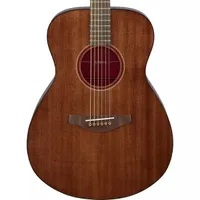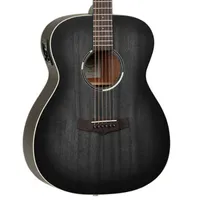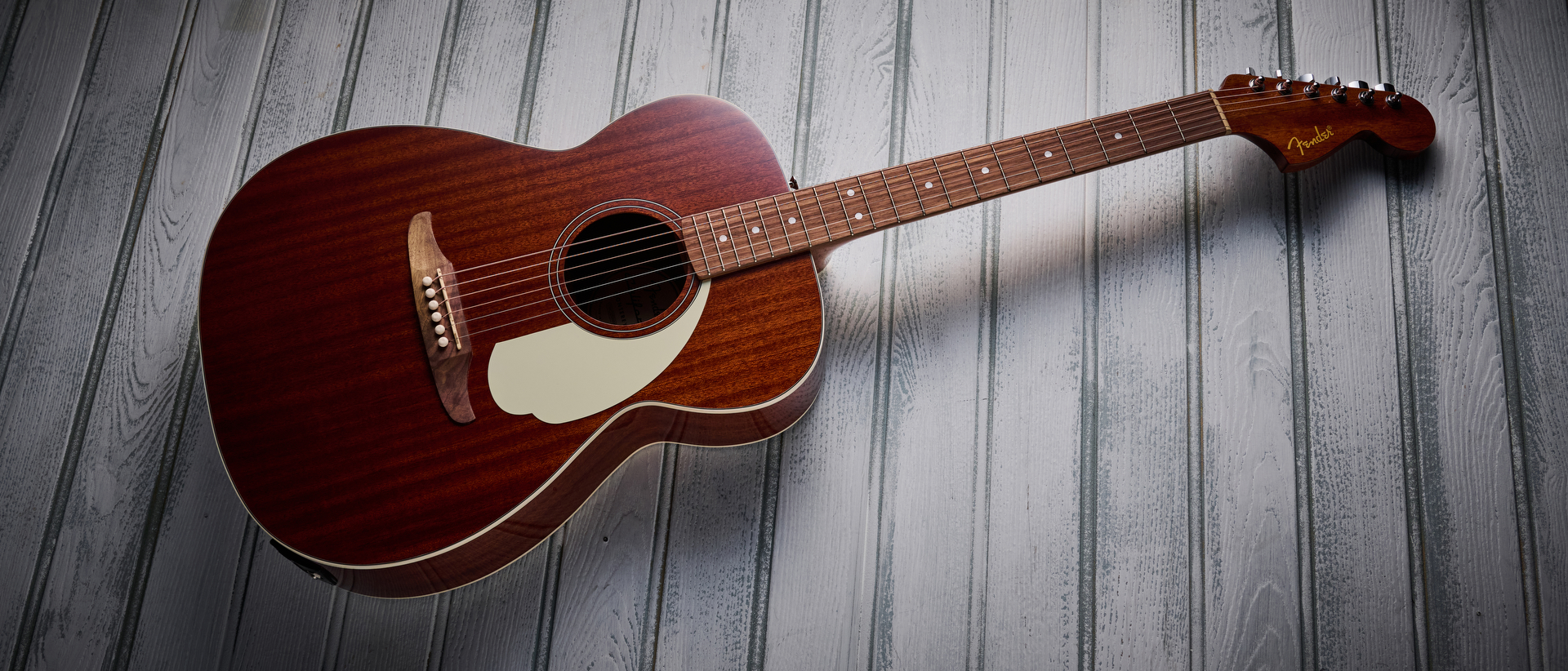Best acoustic guitars under $500 in 2025: get more for your money
These sub-$500 acoustic guitars are ideal for everything from folk and indie guitar to blues and country
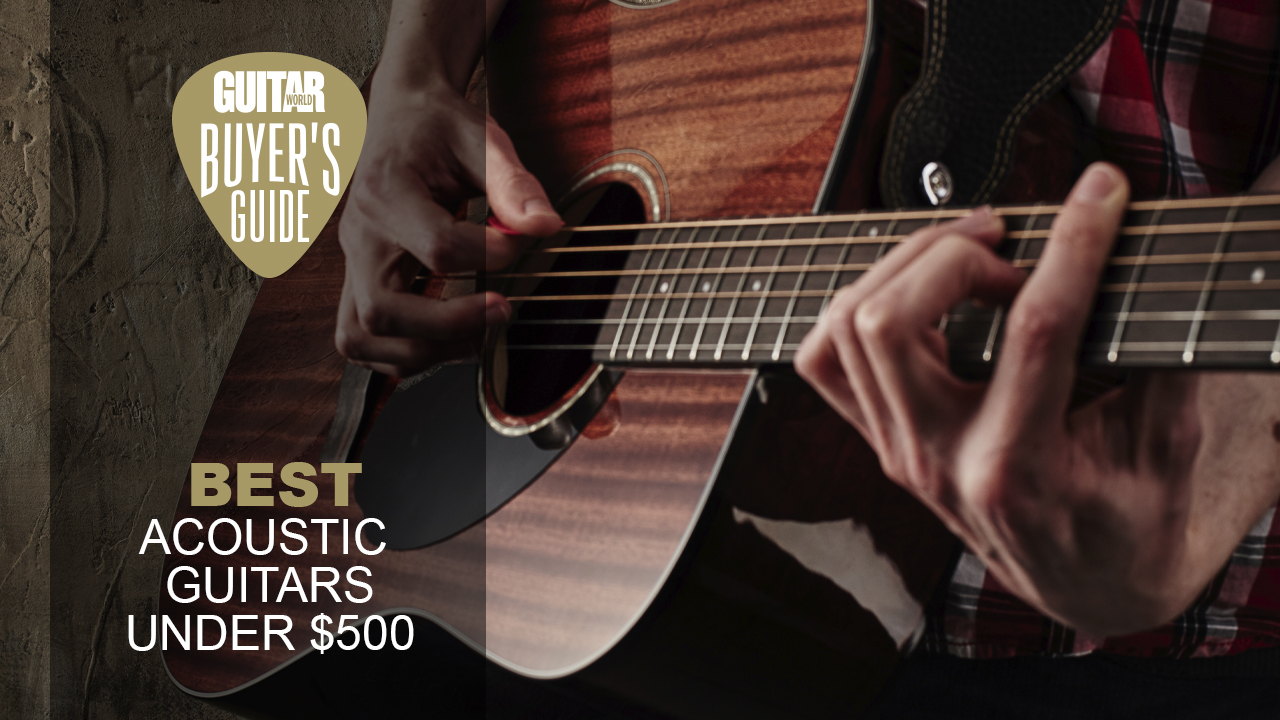
It used to be that buying one of the best acoustic guitars under $500 meant an all-laminate construction and thus a much worse tone than a more expensive acoustic, but that isn’t the case nowadays. While you won’t find an all-solid acoustic guitar below $500 new, you can absolutely get a solid top wood, which will dramatically improve the tone.
If you want the best all-rounder for this price range, I’d recommend you go for the Yamaha FG800. There’s a reason it’s hailed as one of the all-time classic beginner acoustic guitars, and with a solid spruce top it sounds incredibly good for relatively little cash. After your first acoustic guitar? Then look no further than the Fender CD-60S All-Mahogany, which also features a solid mahogany top, delivering excellent playability at a very budget-friendly price.
If you’re new to buying an acoustic guitar, I’ve put together a how to choose section leveraging my 20 years of guitar-playing experience to tell you exactly what you need to look for. I’ve also collated all the questions guitarists frequently ask me around budget acoustic guitars in our FAQs. Finally, there’s a glossary of key terms to help you decipher any guitar-specific talk in this guide.
On the hunt for guitar gear savings this Black Friday? Shop our handpicked selection of the best Black Friday guitar deals.
My top picks
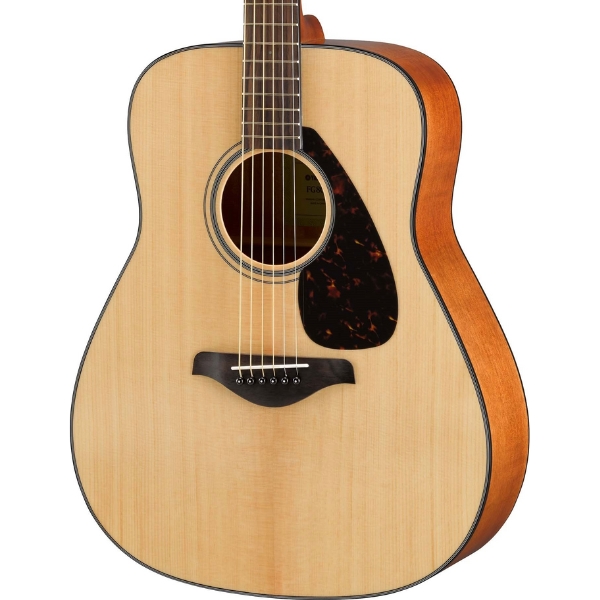
One of the classic beginner acoustic guitars, the Yamaha FG800 gives you a hell of a lot of specs for relatively little cash. A brilliant dreadnought that's incredible value for money.
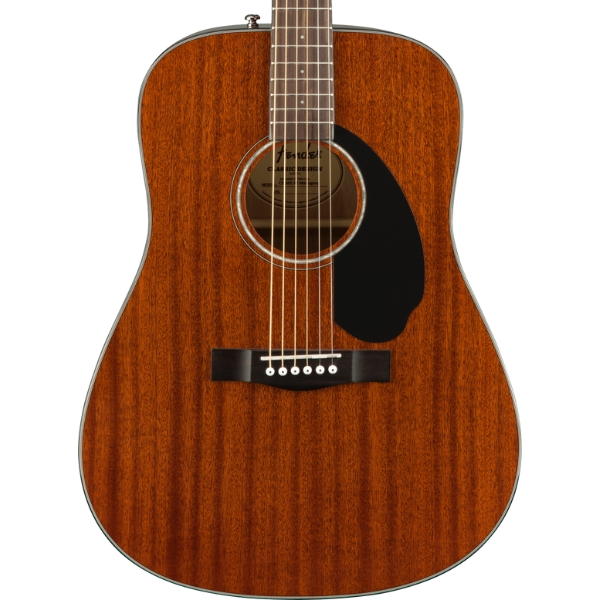
One of the best-selling acoustic guitars around, the Fender CD-60S All Mahogany delivers for well below the $500 mark. With a solid Mahogany top, it's the perfect entry point for beginners.
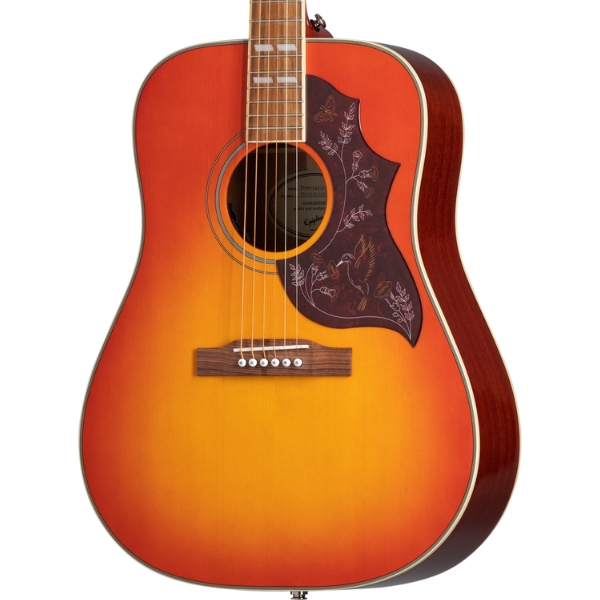
Although it’s one of the most expensive guitars on this list, I’d still describe the Epiphone Hummingbird Studio as great value for money. With its stunning looks and excellent electronics, it’s a brilliant gigging acoustic guitar.
Best overall
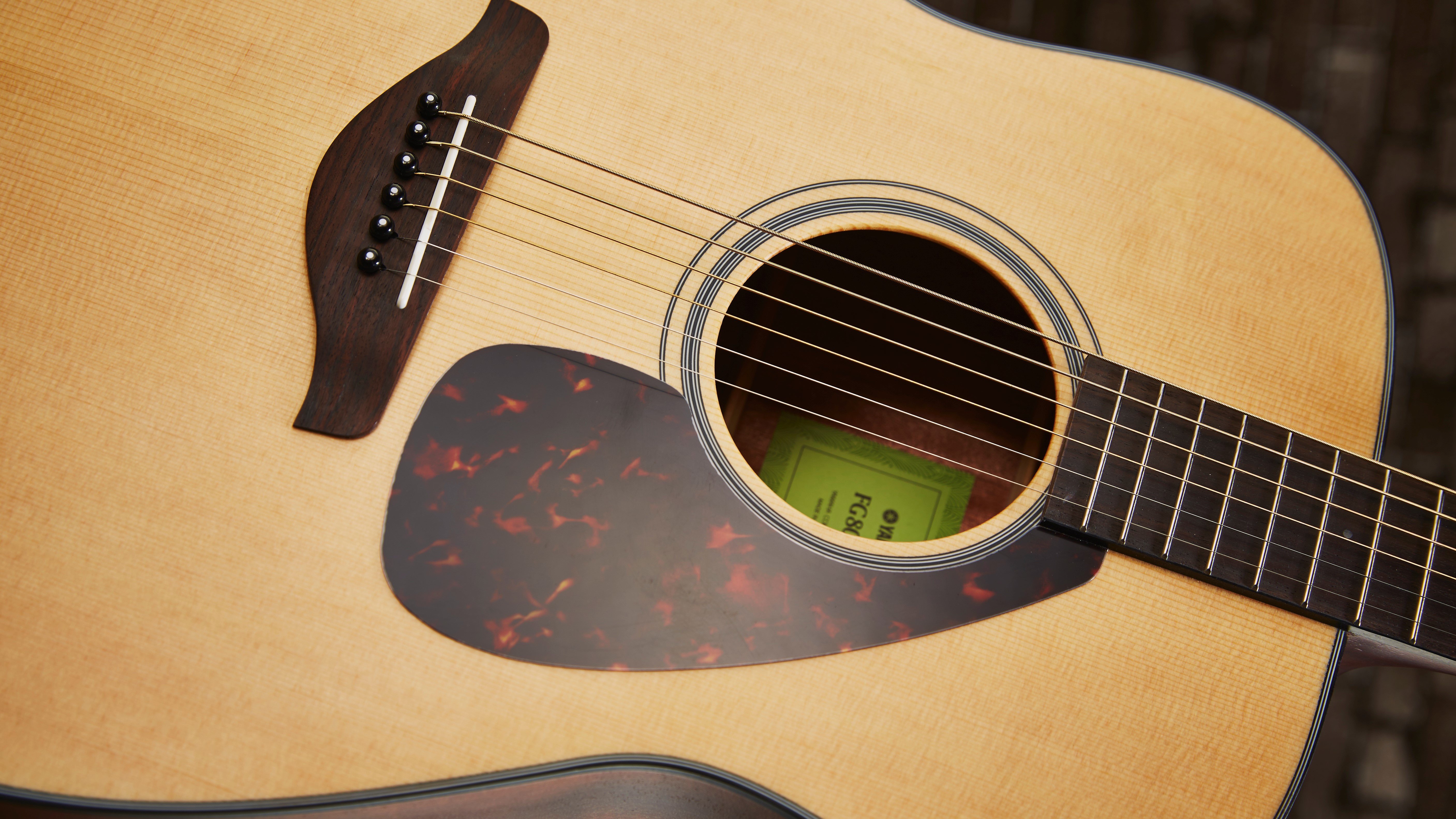
Specifications
Reasons to buy
Reasons to avoid
✅ Buy if you want a solid top for less: The FG800 is famous as a fantastic value acoustic, coming with a solid top at an incredibly reasonable price.
❌ Avoid if you want onboard electronics: There's no pickup system on this guitar, so you'll need to add your own if you want to play through a PA or amp.
Just like Yamaha is a giant of the music industry, the Yamaha FG800 is a giant of the beginner acoustic guitar world. For the money, the spec you get with this brilliant budget acoustic is really quite astonishing.
To see a solid top on a guitar at this price is frankly mind-blowing, but the FG800 follows up with the sound to match it. It's got a lovely punch to it, resonant and balanced whilst remaining articulate no matter what playing style you throw at it.
Being a dreadnought it's a big guitar, so may pose a challenge to those with smaller dimensions or younger players. But if you feel you can handle the large size, this is one of the most rewarding acoustics you can get for under $500.
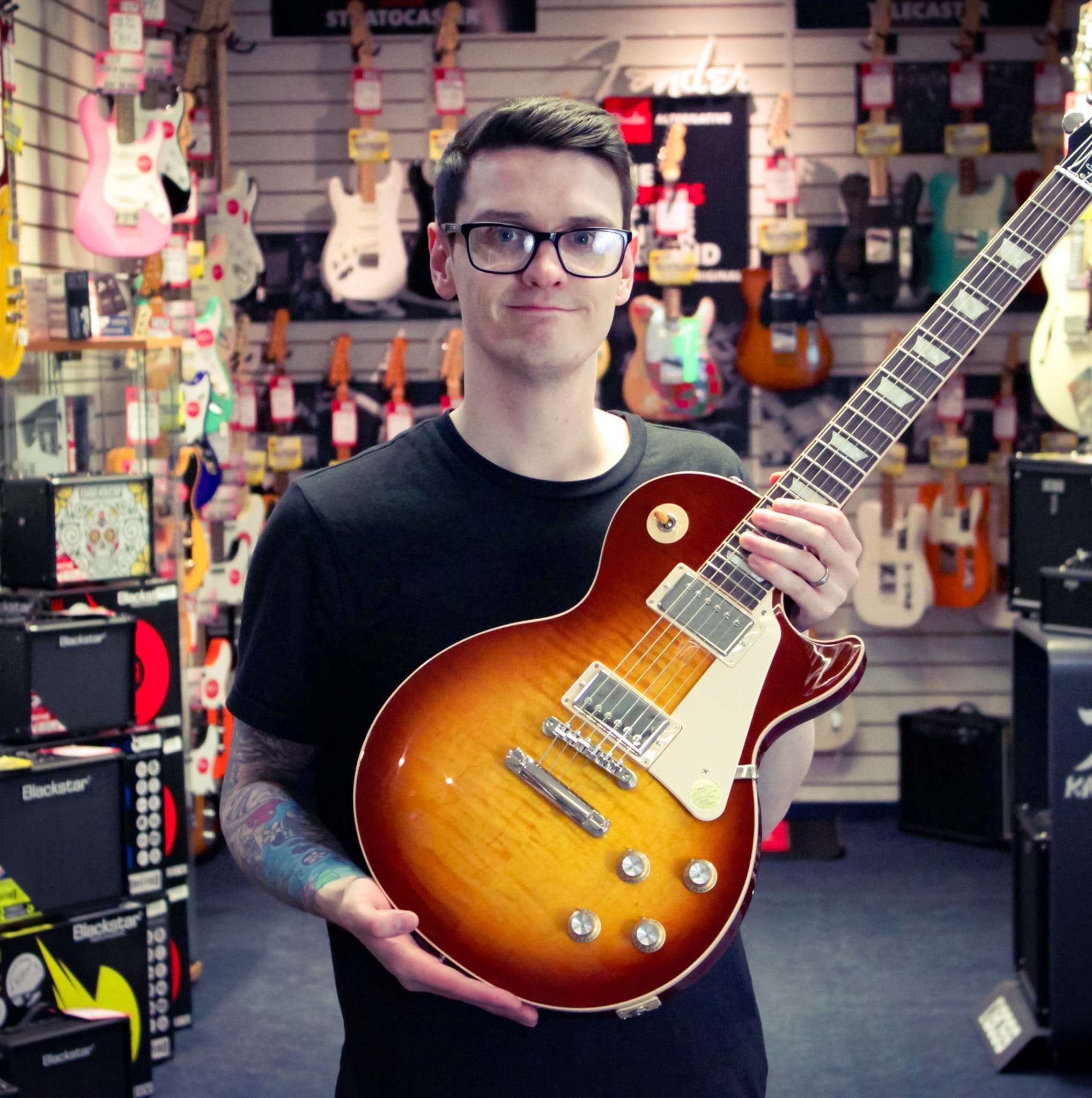
“The solid top and large dreadnought body deliver a rich, full-bodied tone usually reserved for more expensive instruments. You’ll be hard-pressed to find a better quality guitar with these specs at a better price. That’s why the Yamaha FG800 has to be one of our favorite beginner acoustics out there right now.”
Read more: Yamaha FG800 review
Best for beginners
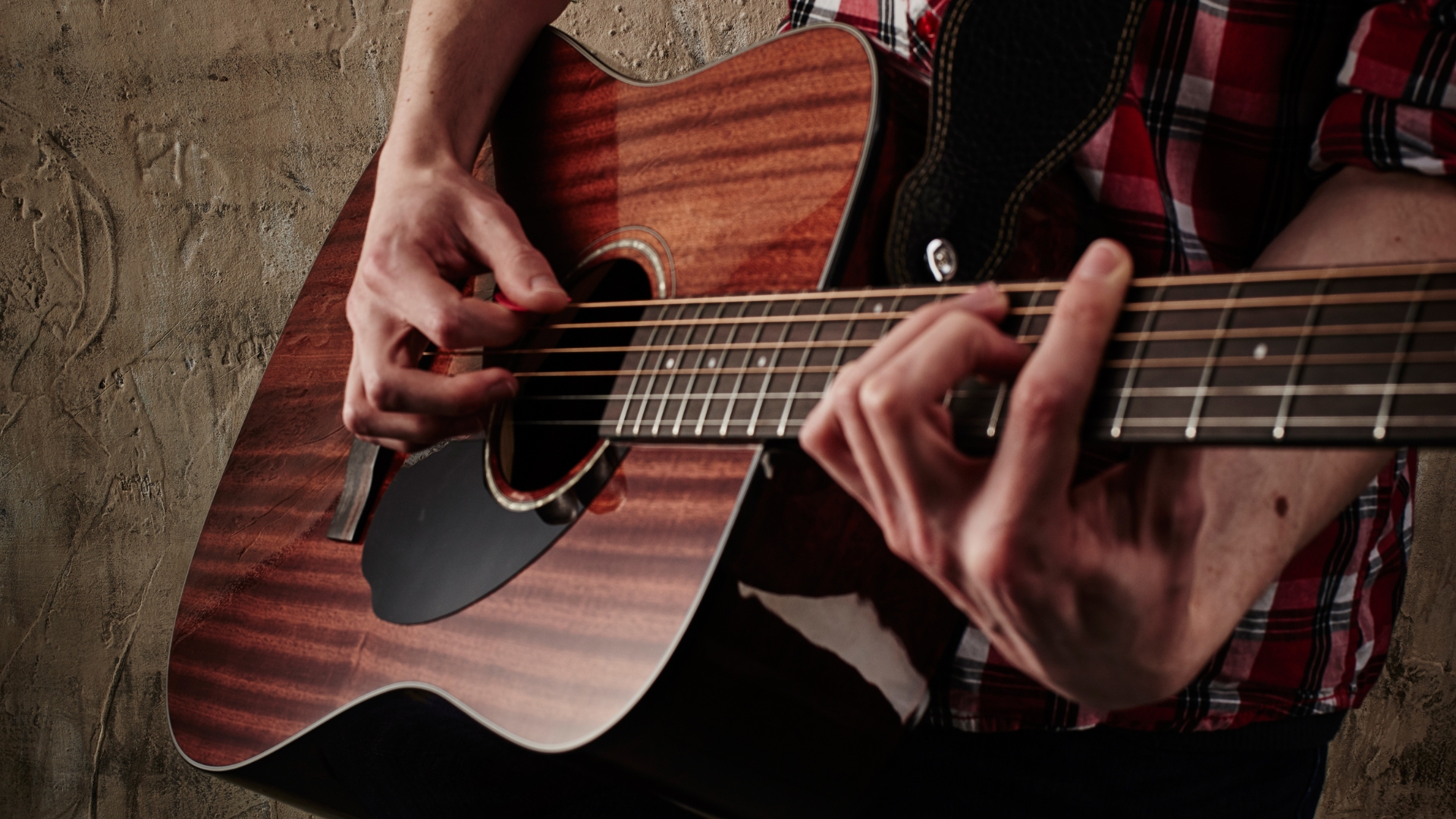
Specifications
Reasons to buy
Reasons to avoid
✅ Buy if you're a beginner guitarist: The CD-60 is fantastic value for money whilst remaining eminently playable, making it an excellent guitar for beginners.
❌ Avoid if you don't like plain looks: There are some beautiful acoustic guitars out there, but this Fender will likely be too basic for those who want a fancy-looking instrument.
The term 'beginner acoustic guitar' doesn’t really fit with today’s standards, as manufacturers derive greater performance from tonewoods at less cost to us. Fender’s CD-60S proves the point, offering a guitar that sounds great and is comfy to play – but all delivered at a low, low price.
Sound is where this dreadnought guitar delivers the goods, with a chiming mid-range brightness that’s part and parcel of a mahogany construction. Fender’s big-bodied dreadnought also extends nicely into the bass, should you wish to explore drop tunings. We found the intonation, tuning and string action to be great on the CD-60S too.
Keep your eyes peeled online for bundle deals that include tuner, strap, strings, gigbag etc. There’s an electro-acoustic version complete with a body cutaway available for a little extra, too.

“Crucially for a beginner’s acoustic, Fender gets the neck profile bang on. The CD-60S is a joy to play, and backs this up with an impressive tone, making chords sound full and wide, yet with a detailed midrange and a vibrant top-end that adds a little magic to the mix.”
Read more: Fender CD-60S All-Mahogany review
Best for gigging
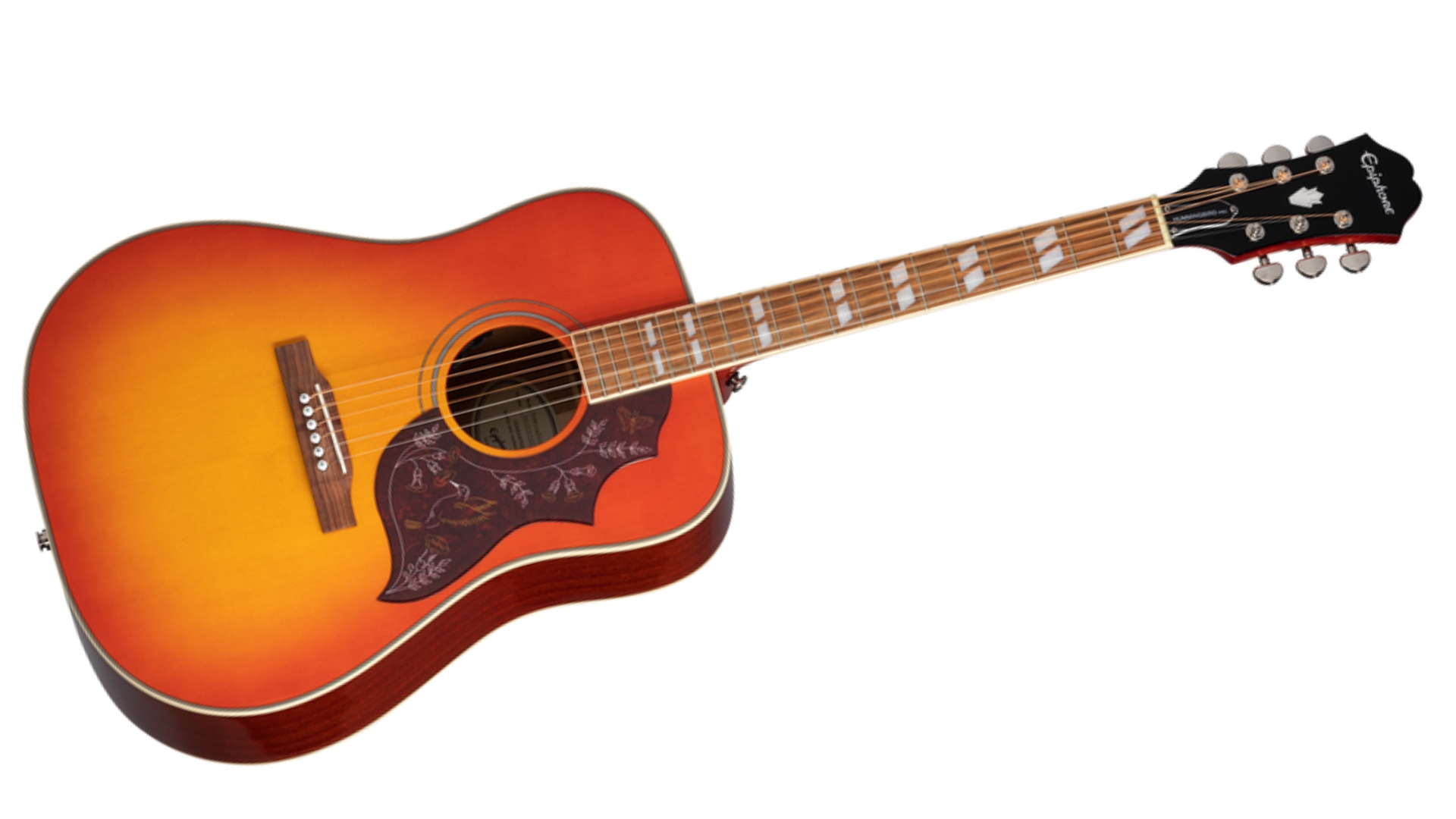
Specifications
Reasons to buy
Reasons to avoid
✅ Buy if you want a great value gigging guitar: With it’s stunning looks and excellent Fishman Sonitone electronics, this is a great guitar for live performances.
❌ Avoid if you don’t want to stand out: It’s a very highly styled acoustic guitar, which for some guitarists might be a little too much.
If you want a great value guitar for gigging, I’d highly recommend the Epiphone Hummingbird Studio. Based on a stone-cold classic of acoustic guitar, it’s a stunning-looking instrument that delivers on pretty much every front.
The visual flair of this guitar is matched by its outstanding build quality, which is incredibly well put together. I could find no fault with it even under a deep inspection. The split trapezoid inlays and pickguard detail look absolutely amazing, which means it’ll be a knockout on stage.
I really love the fast feel of the SlimTaper ‘D’ neck profile, which makes playing a variety of styles an absolute breeze. It’s a Pau Ferro fretboard which felt a little dry on our review model, but nothing a spot of conditioner can’t put right.
In terms of tone, there’s plenty of boomy low end from the dreadnought body, and the solid top gives it a lovely tone if a little boxy in the low-mids. It’s got plenty of volume on tap when you lay into it, and the excellent Fishman Sonitone electronics system sound great when plugged into a PA system.

“Epiphone has managed to capture the look and vibe of the original Hummingbird beautifully here. From the embellished pickguard to the gorgeous faded cherry sunburst, twin parallelogram inlays, and multi-ply binding, there is no question what guitar you are playing - it’s a Hummingbird through and through.”
Read more: Epiphone Hummingbird Studio review
Best for kids
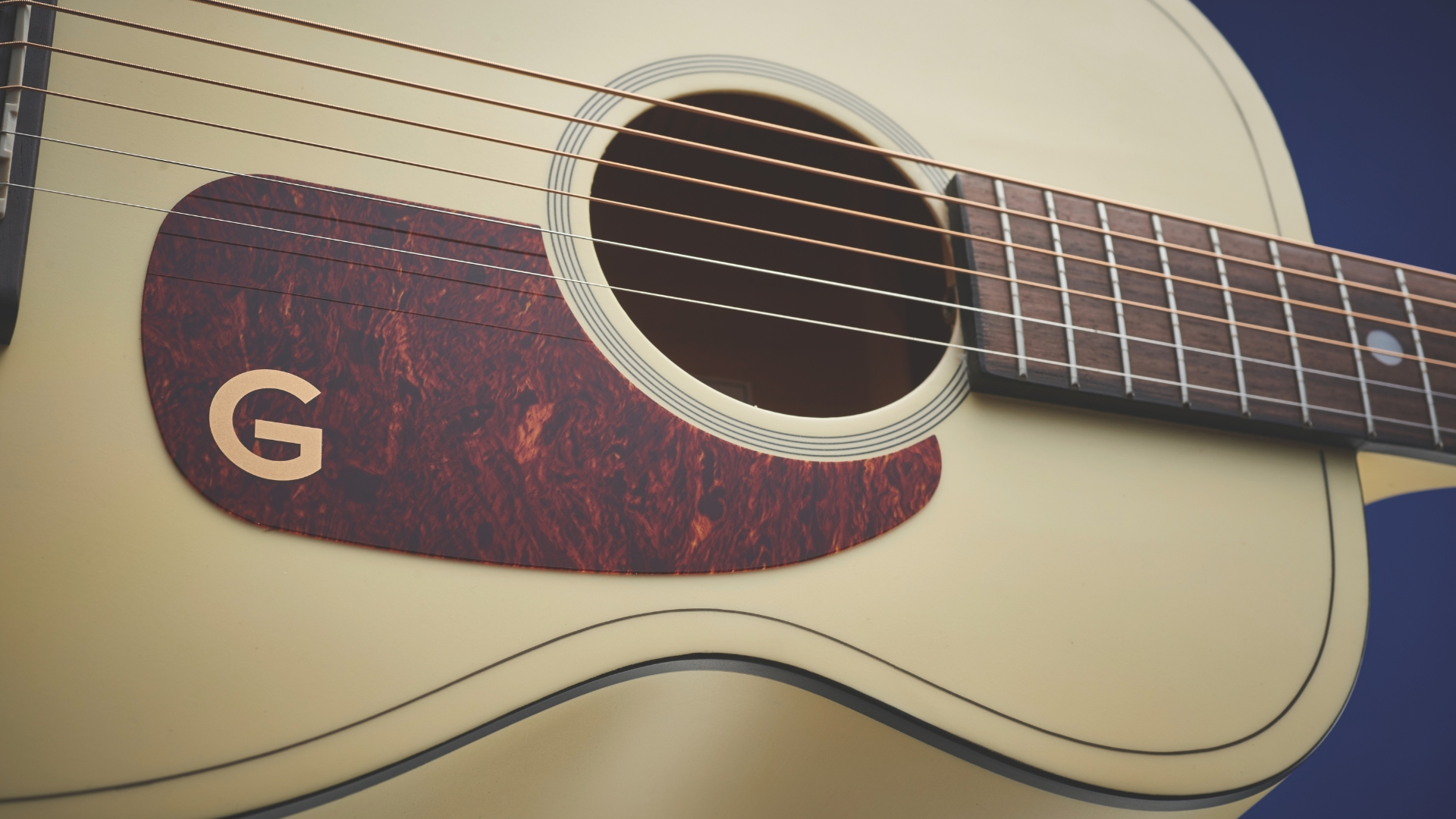
Specifications
Reasons to buy
Reasons to avoid
✅ Buy if you want the perfect sofa guitar: With its small size and low cost, the Jim Dandy is the perfect guitar for noodling on the sofa.
❌ Avoid if you have big hands: The small size of this guitar means the fretboard could feel cramped for those with larger hands.
One of the best-selling acoustic guitars of the last couple of years is also one of the cheapest. Coming in well below the $500 mark, the Gretsch G9500 Jim Dandy has that special something that makes it a perfect low-cost strummer to play on the sofa.
It’s a nice and bright-sounding guitar and while it’s not boomy due to the size, there’s still a hefty amount of projection when you strum hard. When fingerpicking there’s a nice pluck to the strings with a pleasing attack and cutting frequency response.
The action is set up nice and low so it’s playable as soon as you take it out of the box and we found the intonation to be spot on. If you’re used to a full-size acoustic the fretboard will feel a little cramped at first, but once we got used to it we found it super fun to play. It’ll be great for beginner players too.

“There aren’t many acoustic guitars that are this much fun, and even fewer from respected names at this price point. The lack of electronics means you’re likely to pass on the Jim Dandy if you want a gigging guitar (see the Gretsch Gin Rickey for that). But as a play-at-home strummer, campfire traveller or a good quality first acoustic guitar for younger folk, the Jim Dandy has still got it.”
Read more: Gretsch G9500 Jim Dandy
Best for fingerstyle
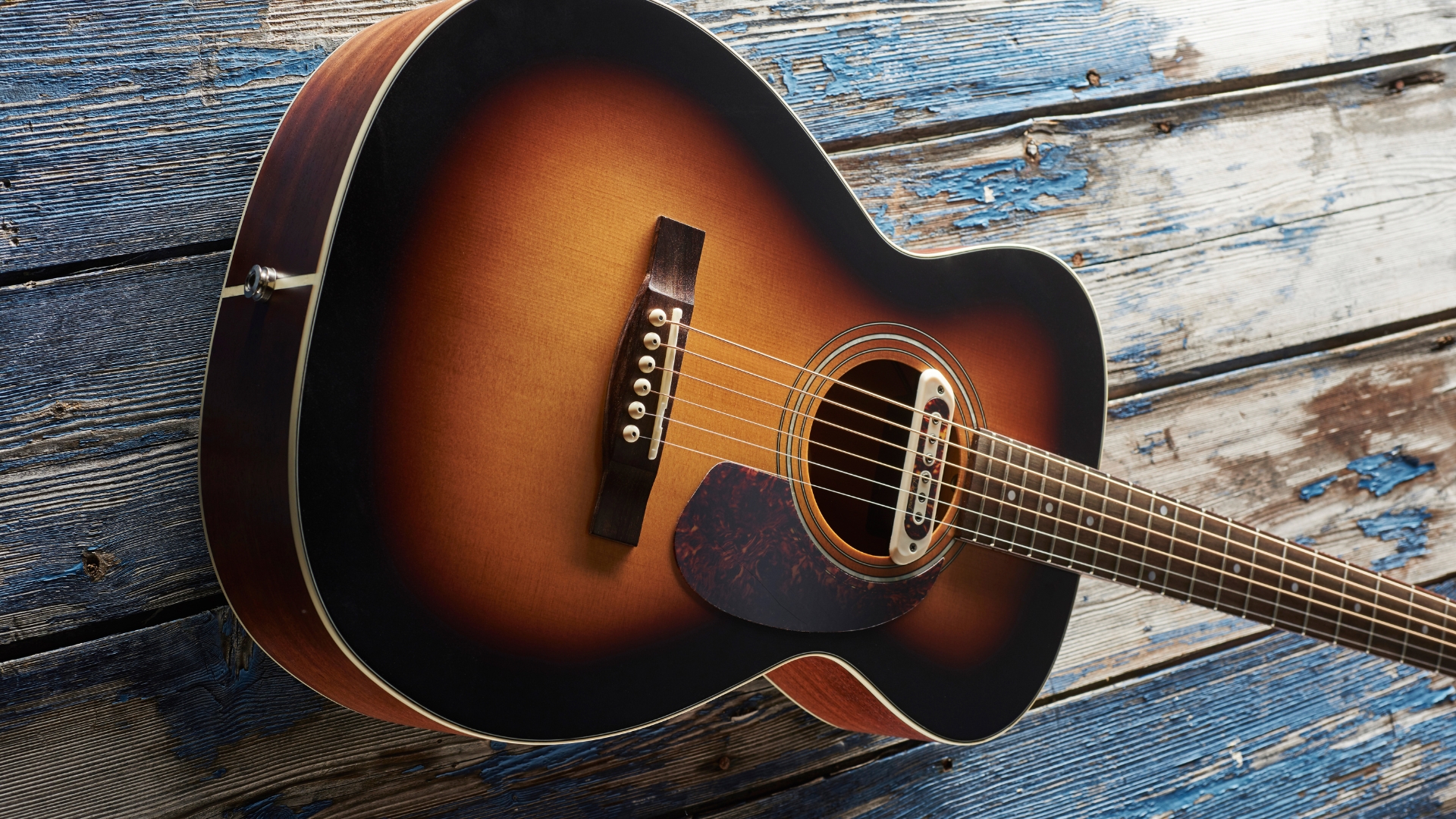
5. Guild M-240E Troubador
Our expert review:
Specifications
Reasons to buy
Reasons to avoid
✅ Buy if you want an all-rounder guitar for less than $500: The Guild M-240E combines a fantastic unplugged voice with smooth playability and great-sounding electronics.
❌ Avoid if you need a lot of volume: As it has a smaller body, it can get a little overwhelmed with hard strumming and open chords.
Guild's M-240E is a slightly more left-field choice when looking at the smaller-bodied acoustic guitars under $500. There's plenty of competition in this product category from names like Martin and Taylor, but if you're after something a little different then the M-240E could be the one for you.
Construction-wise, the classic combination of a solid spruce top and mahogany back & sides provides a snappy, punchy tone with a tasteful low-end presence – meaning that the M-240E is a brilliant choice for both solo artists looking for rich tonal accompaniment, or those in bands that need to cut through the mix just that little bit more.
The comfortable C-shaped neck and small 'M' concert sized body make this diminutive Guild a fantastic travel or couch guitar – but with a full 24.75" scale length, it's still capable of keeping up with some of the big boys. Plugged in, you'll hear the sound of a much bigger guitar thanks to the Fishman Sonitone pickup - making this a seriously versatile acoustic.
Best under $300
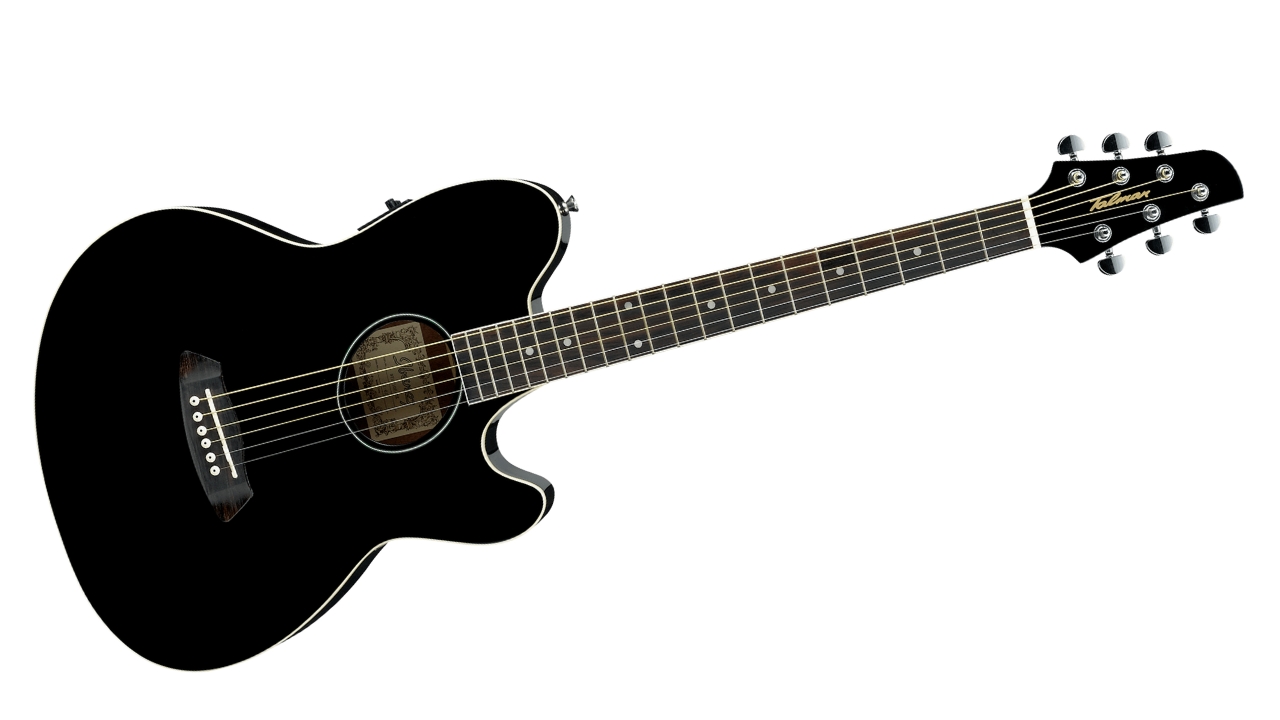
6. Ibanez Talman TCY10E
Our expert review:
Specifications
Reasons to buy
Reasons to avoid
✅ Buy if you want electric guitar playability: The Talman TCY10E features a slim neck profile and excellent upper fret access, making it great for electric guitar players.
❌ Avoid if you need a lot of volume: The thin depth and unusual shape of the body means it's not as loud as your more traditional dreadnought and jumbo acoustics.
If you’re moving over from the acoustic guitar to an electric, the Ibanez Talman TCY10E will deliver that familiar playability with the more raw tones of an acoustic guitar. Its unusual shape not only makes it look cool but delivers excellent upper fret access too.
Of course, that shape and the narrow body depth means that the unplugged tones won’t quite be as full as a traditional dreadnought. It still sounds great though, and can certainly hold its own as an acoustic.
Playability is the main plus point of the design, with a slim and fast-playing neck. The extended upper fret access means you can take those lead licks from your electric to the acoustic too, making it a super-versatile instrument.
Spec comparison
If you want to see the key specs of each guitar in this guide side by side, this spec comparison table gives you all the crucial information in one handy place. Unless otherwise stated in brackets, all woods are laminate rather than solid.
Model | Top | Back & sides | Neck | Fretboard | Scale | Electronics |
|---|---|---|---|---|---|---|
Yamaha FG800 | Spruce (solid) | Nato | Nato | Rosewood | 25 9/16” | No |
Fender CD-60S Mahogany | Mahogany (solid) | Mahogany | Mahogany | Rosewood | 25.3” | No |
Epiphone Hummingbird | Spruce (solid) | Mahogany | Mahogany | Pau Ferro | 24.75” | Yes |
Gretsch G9500 Jim Dandy | Basswood | Basswood | Nato | Walnut | 24" | No |
Guild M-240E Troubador | Spruce (solid) | Mahogany | Mahogany | Pau Ferro | 24.75” | Yes |
Ibanez Talman TCY10E | Spruce | Sapele | Okoume | Purpleheart | 25.5" | Yes |
Also consider
My top six picks should cover the vast majority of guitarists, but if you didn't find what you were looking for, here's a couple more great options for you to look at.
Yamaha Storia III
Solid mahogany top | Mahogany back & sides | Nato neck | Walnut fretboard | Yamaha passive undersaddle pickup
Yamaha’s goal with the STORIA range was to design a guitar that “transforms the traditional acoustic guitar into a one-of-a-kind statement piece”, and we must say, in our opinion, they have certainly achieved that.
★★★★½
Read more: Yamaha Storia III review
Tanglewood TWBB-OE Blackbird
Laminated mahogany top | Laminated mahogany back & sides | Mahogany neck | Techwood fretboard | Tanglewood Premium Plus electronics
The Tanglewood TWBB-O Blackbird has been a huge seller over the last few years thanks to its excellent value price point. Great for beginners or as a sofa guitar for more established players, despite the low cost it’s a surprisingly playable instrument.
★★★★½
How to choose
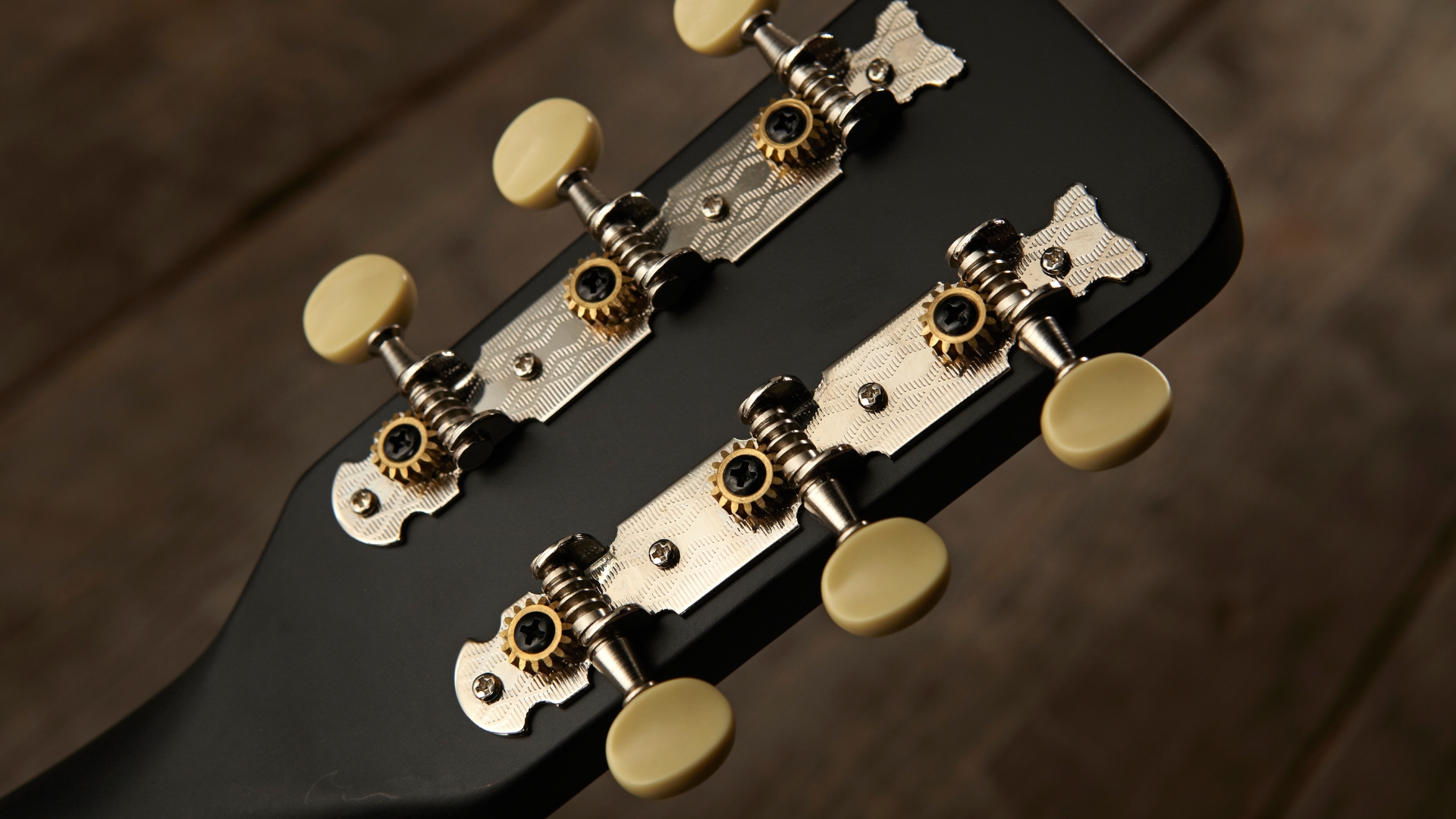
If you’re new to acoustic guitars, there’s quite a lot of choice below the $500 mark, so making a buying decision can be tough. I’ve been playing guitar for over 20 years now, so here’s what I’d look for when purchasing a new acoustic guitar, regardless of price.
1. Construction & tone
You can trust Guitar World
It used to be that you couldn’t get a solid top acoustic guitar below the $500 mark, but that’s changed now. If you can, I would urge you to try and get an acoustic with a solid top like the Fender CD-60S or Yamaha FG800, because it makes a big difference to the sound of the guitar.
Laminated woods are fine, but a solid wood offers much more resonance due to its construction. You won’t find an all-solid guitar for less than $500 unless you get lucky buying second hand, but you can definitely get one at this price point.
2. Playability
The neck profile is one of the most important things on any guitar, so selecting the right one for you is critical. Neck profiles are typically denoted by a letter, which refers to the shape of the neck as you look down on them. A ‘C’ neck is nice and rounded, a good middle point, ‘D’ necks are a bit slimmer, and ‘V’ necks are more vintage neck shape. If you can, it’s worth trying a few different profiles out to see which you find the most comfortable.
3. Electronics
You should also think about whether you need electronics or not. If you’re not regularly gigging, then chances are you won’t need these. That said, you might find after you’ve been playing for a while that you do actually want to play live, so thinking ahead is good here. Onboard electronics often come with a built-in tuner too, which can be really handy for beginners.
4. Used or new?
You can definitely save some money buying a used acoustic guitar, so if your budget is only $500 then it can be worth doing this to make your money go further. You do need to be careful buying used though, and I’d only recommend it to players who’ve been playing a while and know what they’re looking for. Ultimately you’ve got no idea how well the guitar has been treated before you buy it, so for beginners I’d highly recommend you stick to a new instrument.
FAQs
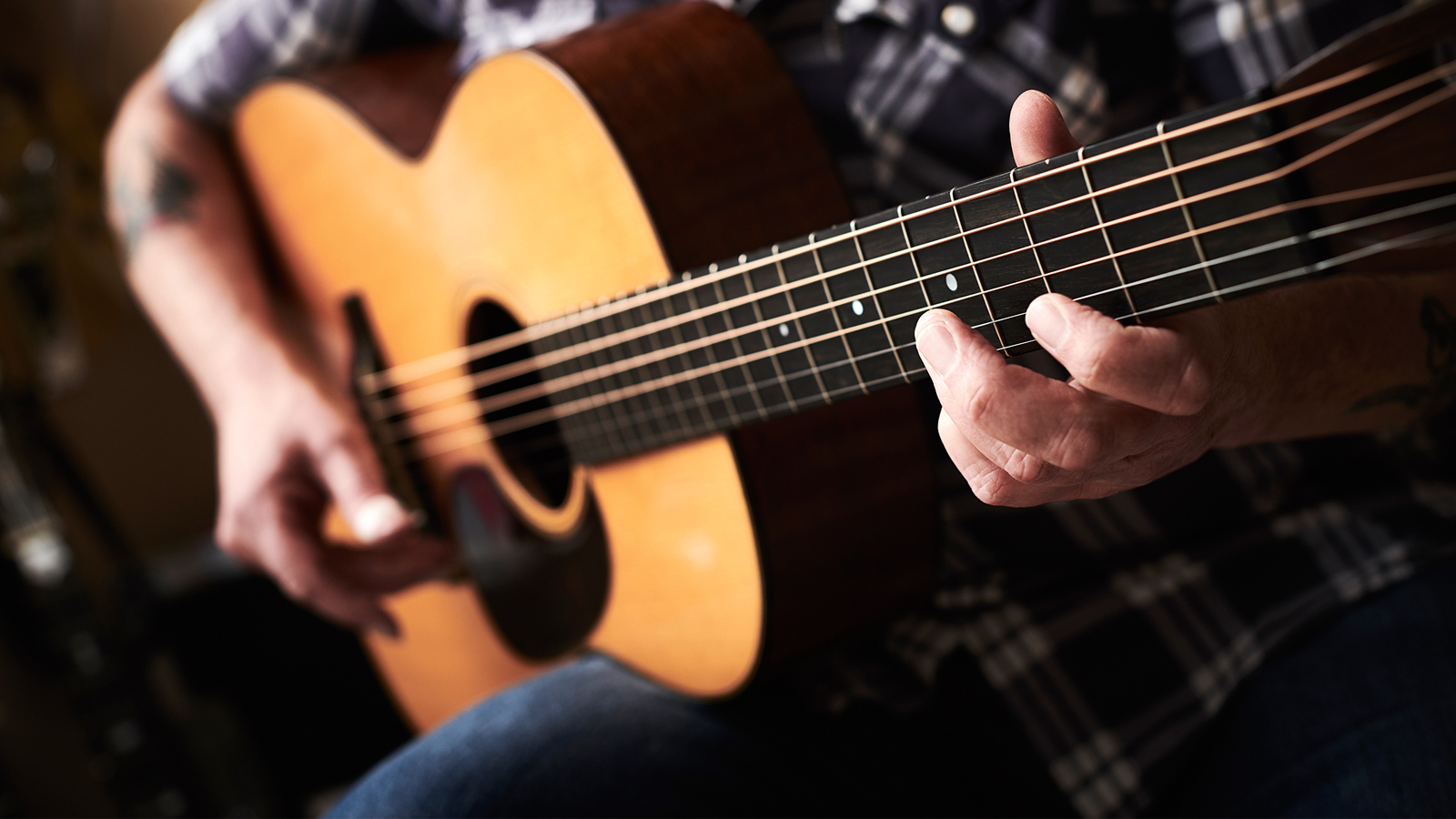
What brands offer the best value below $500?
There are a lot of acoustic guitars available below the $500 mark, but I’d recommend sticking with tried and tested brands here. Fender, Yamaha, Guild, Gretsch, Ibanez, and Alvarez make some fantastic instruments below the $500 mark.
Is a solid-top acoustic worth it?
Yes it is. Solid top acoustics deliver much better tone than their laminate counterparts, so while you might spend a little more for one, it’ll deliver a much better tone which makes it worth it in my opinion. You get better resonance and dynamic range with solid wood, which will make your instrument much more satisfying to play.
What tonewoods sound the best?
The classic tonewood combination is a spruce top with mahogany back and sides, but mahogany tops can sound great too. You might find some lesser-known woods like nato, okoume, and basswood on more budget acoustic guitars, but I’d suggest you focus on the top wood for tone profile. Typically a spruce top delivers a brighter sound, while a mahogany top will have more warmth.
How does the body shape affect the tone?
The general rule with acoustic guitars is the bigger the body, the more volume it has. Dreadnought-size guitars offer the biggest sound with a strong low end, orchestra and concert models are more balanced and better for fingerstyle. Parlor guitars are very mid-rangey, making them great for blues.
Will an acoustic guitar below $500 need a setup?
It varies. I’ve encountered acoustic guitars below $500 that were perfectly set up out of the box, and others that definitely needed some work. I would argue that you should get any guitar you buy set up, as this allows you to customize its playing feel to your unique style, but it all depends on how you feel when you play it. If you feel like its holding you back or there’s something you don’t quite like, get it set up. If it feels effortless and enjoyable to play, don’t worry about it.
Should I get an acoustic guitar with electronics?
Nearly every modern acoustic comes with electronics nowadays, but they’re only really a necessity if you’re playing live. Recording an acoustic guitar is much better with a condenser or ribbon microphone, so you’ll only really need electronics to plug into a PA at a live show, as this makes your sound engineer’s life much easier. Electronics often included a tuner though, which can be very useful for newer players.
How long will an acoustic guitar below $500 last?
So long as you look after it, there’s no reason a lower-priced acoustic guitar can’t last ten years or more. You’ll need to look out for humidity, regularly change your strings and clean your instrument, and just take care not to drop it, and your guitar will easily be able to stand the test of time.
Why trust Guitar World?
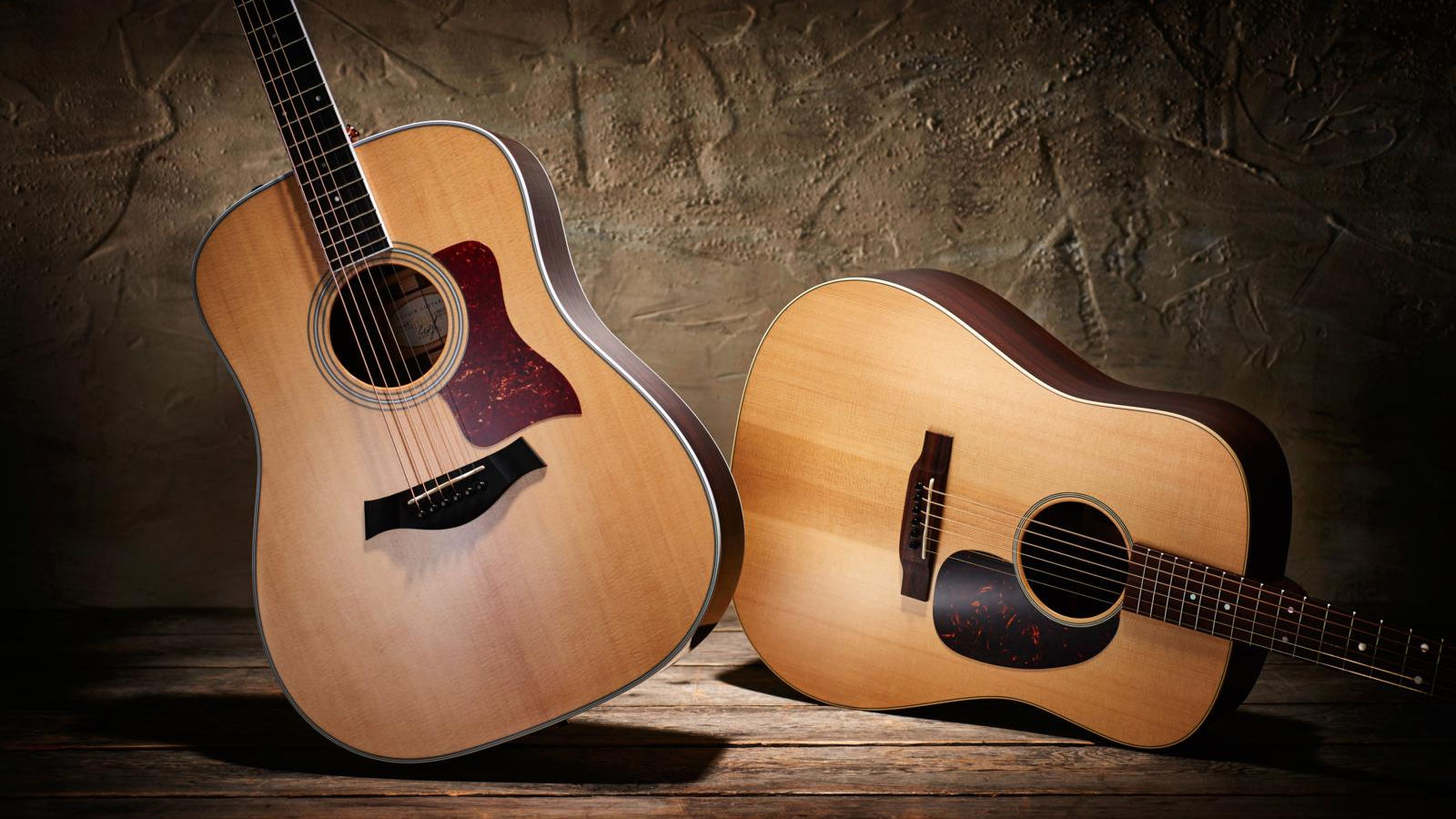
☑️ A global audience of 3.8 million guitarists monthly
☑️ 1,200+ reviews on GuitarWorld.com
☑️ 30+ years of product testing at Guitar World
Guitar World boasts over 44 years of expertise and stands as the ultimate authority on all things related to guitars. The magazine and website feature expertly written gear round-ups and top-quality, authoritative reviews penned by a team of highly experienced industry professionals.
Guitar World's inaugural print issue hit the shelves in July 1980, and ever since, it has been captivating players and enthusiasts with engaging lessons, insightful interviews with the biggest guitar heroes, and priceless buying advice for newbie players.
Furthermore, GuitarWorld.com continues this legacy online and serves as the hub of the world's foremost authorities on guitar playing. The site not only hosts content from Guitar World but also showcases articles from respected publications such as Guitarist, Total Guitar, Guitar Techniques, and Bass Player. With a reach extending to 3.8 million players each month, GuitarWorld.com is a go-to destination for guitar fanatics globally.
Below, you'll find more information about the expert authors of this guide.

Chris has been the Editor of Total Guitar magazine since 2020. Prior to that, he was at the helm of Total Guitar's world-class tab and tuition section for 12 years. He's a former guitar teacher with 35 years playing experience and he holds a degree in Philosophy & Popular Music. Chris has interviewed Brian May three times, Jimmy Page once, and Mark Knopfler zero times – something he desperately hopes to rectify as soon as possible.

I'm Guitar World's Senior Deals Writer. In this role I create and maintain the 200+ buyer's guides you'll find on the site, find the best deals on guitar products for our readers, and test the latest gear. My reviews have been featured in prominent publications including Total Guitar, Future Music magazine and MusicRadar.com.
During my career, I have been lucky enough to talk to many of my musical heroes, having interviewed Slash and members of The Offspring, Foo Fighters, Sum 41, Thrice, and more. Prior to joining the Guitar World team, I worked in music retail, at Kenney's Music in Dundee, Scotland. For a decade, I advised everyone from absolute beginners to seasoned pros on the ultimate gear for their needs, from beginner acoustic guitars, to top-end modelers.

Matt is a Junior Deals Writer here at Guitar World. He regularly tests and reviews music gear with a focus on guitars, amps, pedals, modelers, and pretty much anything else guitar-related. Responsible for over 60 buying guides, a large part of his role is helping guitarists find the best deals on gear. Matt worked in music retail for 5 years at Dawsons Music and Northwest Guitars and has written for various music sites including MusicRadar, Guitar Player, Guitar.com, Ultimate Guitar, and Thomann’s t.blog.
A regularly gigging guitarist with over 20 years of experience playing live and writing and recording in bands, he's performed everything from jazz to djent, gigging all over the UK in more dingy venues than you can shake a drop-tuned guitar at. When he's not holed up in his home studio recording new songs or tweaking pedal settings, you’ll find him making a racket with Northern noise hounds JACKALS.
Key terms
- Action: This is the distance between the strings and the fingerboard.
- Back & sides: The literal back and sides of the acoustic guitar, the material of which plays an important role in how the acoustic sounds.
- Boomy: A boomy acoustic is one that is prominent and dominated by low-end bass frequencies.
- Boxy: A boxy tone is mostly prominent in the mid-range, sounds compressed and without much sustain.
- Bridge: The bridge is the part of your guitar that holds the strings to the surface of the guitar’s body.
- Cutaway: A cutaway is a carved-out part of the guitar’s body to allow for easier access to the upper frets.
- DI (Direct Input): A method of sending a signal directly into a PA system, audio interface, or preamp.
- Electronics: A combination of a pickup and preamp on an acoustic guitar, used to plug into a PA system.
- EQ (Equalization): Equalization allows you to adjust the volume of different frequencies to shape the tone you are hearing, which is usually lows, mids and highs.
- Feedback: This happens when an acoustic-electric’s pickup captures its own amplified sound, creating a continuous loop that builds into a sustained howl.
- Intonation: Intonation refers to how accurately your guitar plays in tune across the fretboard.
- Laminate: In the guitar world, a laminate tonewood involves many layers of wooden veneer glued together to create either the top, back or sides.
- Pickup: Similar to an electric guitar pickup, a pickup on an acoustic guitar uses magnets and a coiled wire to create a magnetic field, allowing you to electrically amplify its sound.
- Nut: The part of the guitar that holds the strings in place at the end of the fingerboard, traditionally made from bone; now it tends to be a synthetic material.
- Preamp: This is an electrical unit that boosts your guitar’s weak signal into one that can be amplified.
- Rosette: This is the decorative circle around the soundhole; it is purely for cosmetic purposes and can be laid with different materials like wood and abalone.
- Saddle: The piece seated in the bridge that raises the strings, creating the break angle needed for proper tension, tuning stability, and intonation.
- Scale length: The distance between the nut and the saddle. A shorter scale length makes strings feel slinkier and easier to bend, while a longer one adds tension and snap.
- Top (soundboard): The guitar’s top wood that does most of the heavy lifting for tone.
How we test
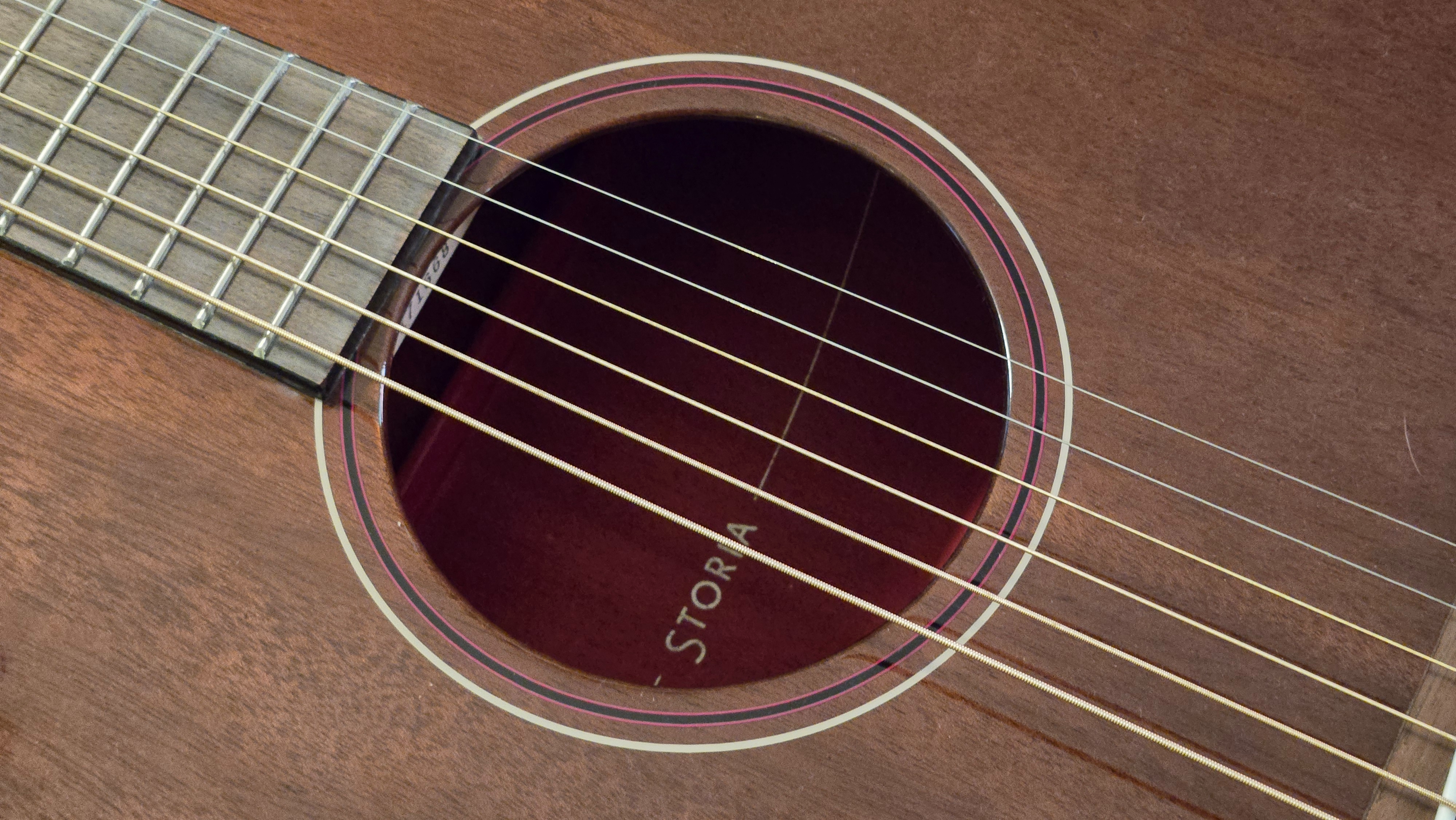
When it comes to acoustic guitars, every player has their own personal preferences regarding the tone and feel. However, regardless of taste, there are a few key areas that an acoustic guitar must meet before we'd feel comfortable recommending it in a guide like this.
Like with any instrument, we begin by looking at the overall build quality. We closely inspect every inch of the guitar, from the body and neck to the machine heads, bridge, and saddle, to ensure they feel robust, sturdy and up for taking you on your musical journey.
We'll next check the consistency of the fretwork to confirm there aren't any sharp frets or uneven frets that may result in buzzing. This ties into the playability of the guitar. For us, the guitar should be comfortable to someone new to the instrument, and this means a reasonably forgiving neck and unobtrusive body.
Lastly, we move our attention to the overall sound of the acoustic guitar. To test the tone of the instrument, we will try a variety of different playing techniques and styles to see how the guitar handles them, from strumming wide-open chords with a flat pick to soft fingerpicking and everything in between. We are carefully listening to the volume the guitar produces and the overall tonal balance of the sound.
Find out more about how we make our recommendations and how we test each of the products in our buyer's guides.
Related buyer's guides
- Find great tone with the best acoustic guitars under $1,000
- Downsize to one of the best 3/4 acoustic guitars
- Add another dimension to your playing: the best 12-string guitars
- Looking to spend as little as possible? Check out the best cheap acoustic guitars
- Level up your playing with the best online guitar lessons
All the latest guitar news, interviews, lessons, reviews, deals and more, direct to your inbox!
Chris was Editor of Total Guitar magazine from 2020 until its closure in 2024, when he became Lesson Editor for Guitar World, MusicRadar and Guitar Player. Prior to taking over as Editor, he helmed Total Guitar's world-class tab and tuition section for 12 years, helping thousands of guitarists learn how to play the instrument. A former guitar teacher, Chris trained at the Academy of Contemporary Music (ACM) in Guildford, UK, and held a degree in Philosophy & Popular Music. During his career, Chris interviewed guitar legends including Brian May and Jimmy Page, while championing new artists such as Yungblud and Nova Twins. Chris was diagnosed with Stage 4 cancer in April 2024 and died in May 2025.
- Matt McCrackenJunior Deals Writer
- Daryl RobertsonSenior Deals Writer
